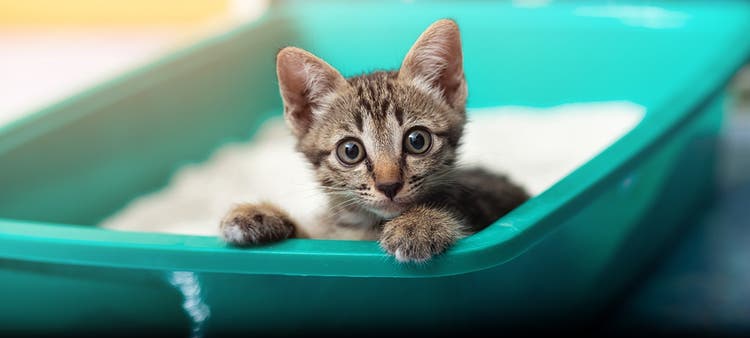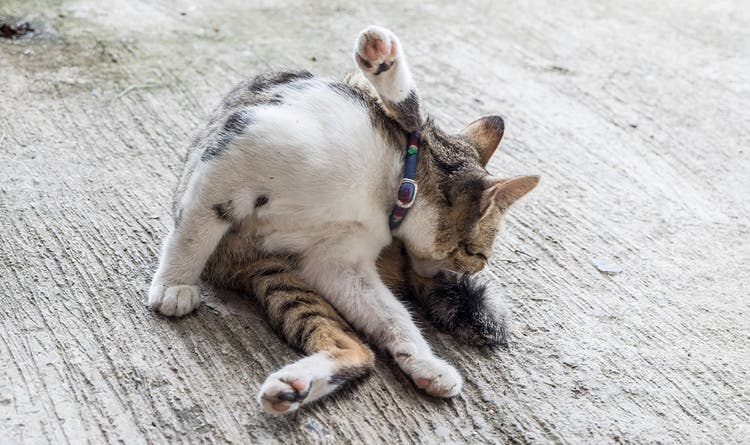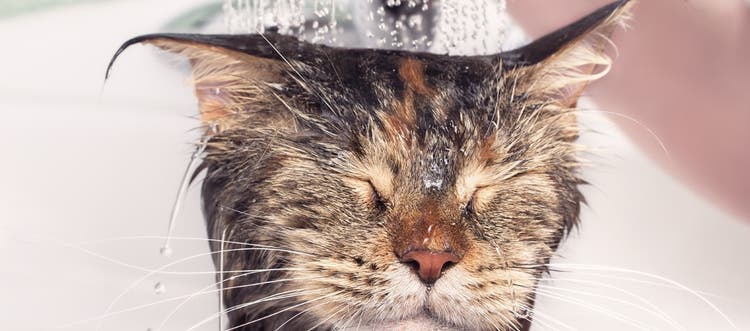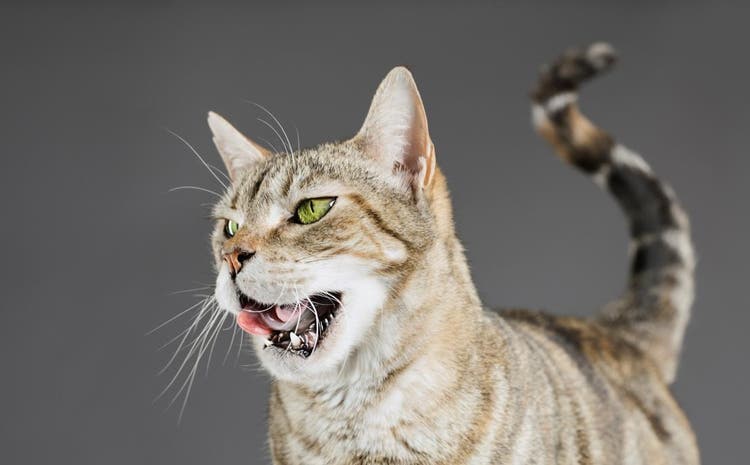Learn how to curb cat spraying.
There’s no mistaking the smell of cat urine. So, if your cat starts to spray or mark inside your home, you’ll probably notice right away. This behavior is something many cat owners experience and usually isn’t a serious issue — unless it continues after you take corrective steps.
There are several reasons why your cat may spray inside your home — and a few steps you can take to stop it. The key is to observe your cat to see which reasons are most likely the cause, so you can determine which steps to take.
What’s the Difference between Urinating and Spraying?
If your cat squats and relieves their bladder on flat surfaces like the floor, carpet or a couch cushion, they’re likely just urinating. However, if your cat stands with their tail upright and leaves small amounts of pungent urine on vertical surfaces, such as a wall or the side of a chair, they’re spraying or scent marking.
Why Do Cats Spray?
Contrary to popular belief, spraying is not a sex-specific behavior. Both male and female cats spray to mark their territory. Spraying establishes boundaries for cats outside, and they may spray indoors if something disrupts their usual routine or daily life.
Here are some of the most likely reasons your cat may be spraying or marking.
Reasons Why Cats Spray or Mark
1. Stress
Your cat can be more temperamental than you may realize. Any change to your household — from switching out a familiar piece of furniture to introducing another member of the family (pet or person) — can cause a rise in stress.
2. Urinary Tract Infections (UTIs) or Medical Issues
UTIs are the most serious reason that could cause your cat to spray — especially male cats. If a male cat has a partially blocked urinary tract, they will be in a lot of discomfort, which could cause them to urinate as soon as they feel any pain. Female cats can also get UTIs, but blockages are less common.
If your cat is experiencing a UTI or blockage, they’ll be more vocal than normal and may display other changes in behavior. If you suspect a blocked tract or other medical issue, take your cat to the vet as soon as possible; blockages almost never work themselves out on their own and can be fatal if left untreated.
3. Mating Behavior
If your cat has not been neutered or spayed, you’ll probably experience more than a few sprayings. This is a natural instinct for cats when they’re in heat. This behavior may occur even more if you have multiple cats in the house.
4. Marking Turf
Even if your pet is an indoor cat, seeing outdoor cats wandering through your yard or outside a window can make them feel the need to mark their territory.
5. Litter Box Issues
Cats are known to be unpredictable, especially when it comes to their litter box preferences. What was once perfectly suitable can become completely unacceptable — overnight. If other causes don’t fit the bill, this could be the culprit.

7 Ways to Help Stop Your Cat from Spraying
Now that you know the most frequent causes of spraying and marking, here are seven ways you can help stop the behavior.
1. Provide Stress Relief
You can help your cat de-stress by giving them more attention through play or petting, whichever your cat prefers. In addition, you can get another version of your cat’s favorite toy, or even two of them along with some catnip.
2. Un-mark the Spot
Of course, you always need to clean the marked area. What isn’t as obvious is the best type of cleaner to use. Though cat urine has a strong smell, you shouldn’t use a fragrant, heavily scented cleaner. If you use a cleaner with too much fragrance, your cat could take it as a challenge and re-mark the spot. Instead, use an enzyme-based, scent neutralizing cleaner.
3. Make the Marked Spot a Happy Place
After the cleaner has done its work and dried, consider repurposing the space for play or for feeding your cat (at least temporarily). If your cat marked an object, move it to a place that’s harder to reach or even store it away for the short term. This action will help change your cat’s perception of the area and may help reduce the chances of re-marking.
4. Get Your Cat Spayed or Neutered
This is the most reliable and effective way to stop marking. If frequent spraying is becoming an issue, spaying or neutering them is most likely your best course of action.
5. Close the Blinds
Some cats are more territorial than others. If your cat feels threatened when they see other cats through the window, then don’t let them watch. If you want to give them something else to watch as an alternative, some pet channels and websites offer “cat TV” that shows fish swimming or birds in a tree.
6. Change the Type of Litter
This can be a touchy subject, as cats can be very selective when it comes to their litter. If you’ve tried all the steps listed above and your cat is still spraying, consider changing their litter type or even getting a new litter box to see if that will curb your cat’s spraying.
7. Visit the Vet
If all else fails, there are proven anti-anxiety medications that can help reduce stress levels for your cat. Talk to your vet to discuss the best treatment option for your pet.
Cat spraying can be unpleasant for pet owners, but taking these steps can help your cat get back into the habit of urinating only in the litter box. If your cat continues to spray, contact your vet to get to the bottom of what’s causing the behavior.
References
- American Society for the Prevention of Cruelty to Animals. (n.d.). Urine Marking in Cats. Retrieved from https://www.aspca.org/pet-care/cat-care/common-cat-behavior-issues/urine-marking-cats
- Blue Cross for Pets. (n.d.). Stop your Cat Spraying or Soiling in the House. Retrieved from https://www.bluecross.org.uk/advice/cat/behaviour-and-training/stop-your-cat-spraying-and-soiling-in-the-house
- The Humane Society of the United States. (n.d.). Urine-marking behavior: How to prevent it. Retrieved from https://www.humanesociety.org/resources/cat-marking-territory

Endurosyn® Digestive Health Probiotic Oral Gel for Cats
A three-day probiotic oral gel to promote intestinal well-being during sudden times of stress in cats.
Related Articles

New Cat or Kitten: Our Downloadable Guide
Thinking about adding a feline to the family? There are so many emotional, social and physical benefits to owning a cat. Check out our free guide, also available to download!








